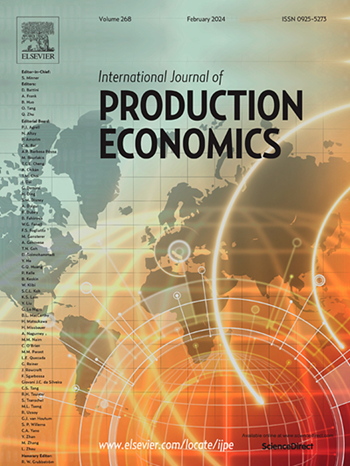Supply chain channel configuration with power imbalance and spillovers under platform retailing
IF 9.8
1区 工程技术
Q1 ENGINEERING, INDUSTRIAL
引用次数: 0
Abstract
This study examines how channel selection power and brand spillovers affect firms’ channel configuration strategies in a platform retail market. We consider four modes based on the different selling choices of the strong-brand (the former) and weak-brand (the latter) manufacturers, namely, modes , , , and , in which () stands for the reselling (agency) channel. Meanwhile, the strong-brand manufacturer has the channel selection power, while the platform will consider whether to implement a brand spillover strategy. Some intriguing findings are derived. First, the equilibrium channel structures primarily depend on the channel selection power, degree of complementarity, commission rate, and brand spillover effect. Second, to avoid horizontal externalities, manufacturers will only choose mode when the degree of complementarity is high even if the commission rate is zero. Third, when both manufacturers have channel selection power, modes , , and are the optimal channel configurations, while mode will be excluded, and the brand spillover effect discourages manufacturers from choosing the agency channel. Finally, endowing manufacturers with channel selection power may result in a triple-win situation for the three firms, although this does not always benefit consumers. Moreover, endowing the weak-brand manufacturer with channel selection power always favors the strong-brand manufacturer in a complementary market, whereas the opposite is true in a substitute market.
求助全文
约1分钟内获得全文
求助全文
来源期刊
CiteScore
21.40
自引率
7.50%
发文量
266
审稿时长
52 days
期刊介绍:
The International Journal of Production Economics focuses on the interface between engineering and management. It covers all aspects of manufacturing and process industries, as well as production in general. The journal is interdisciplinary, considering activities throughout the product life cycle and material flow cycle. It aims to disseminate knowledge for improving industrial practice and strengthening the theoretical base for decision making. The journal serves as a forum for exchanging ideas and presenting new developments in theory and application, combining academic standards with practical value for industrial applications.

 求助内容:
求助内容: 应助结果提醒方式:
应助结果提醒方式:


